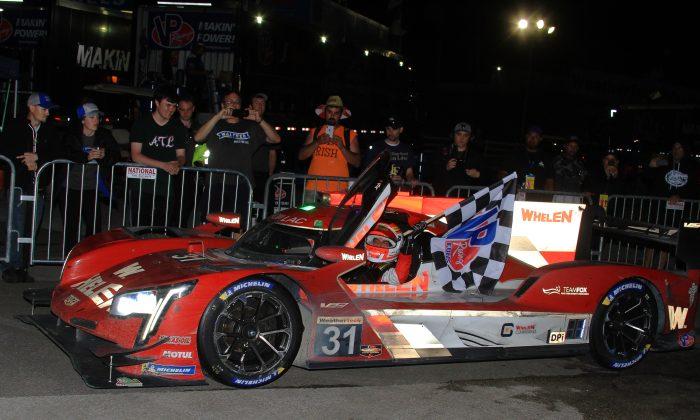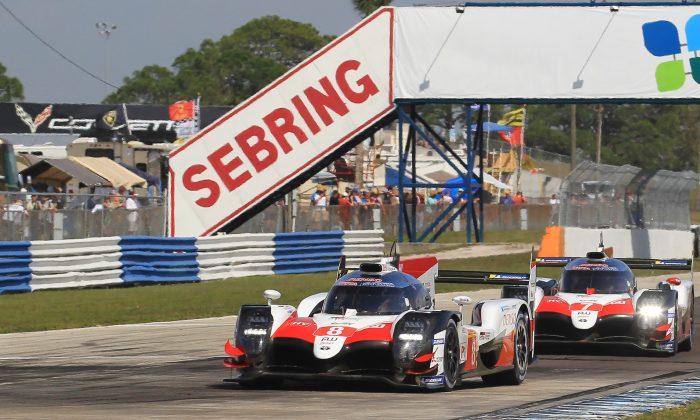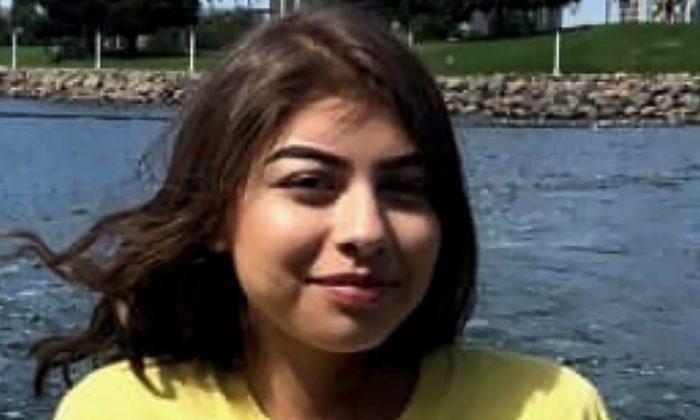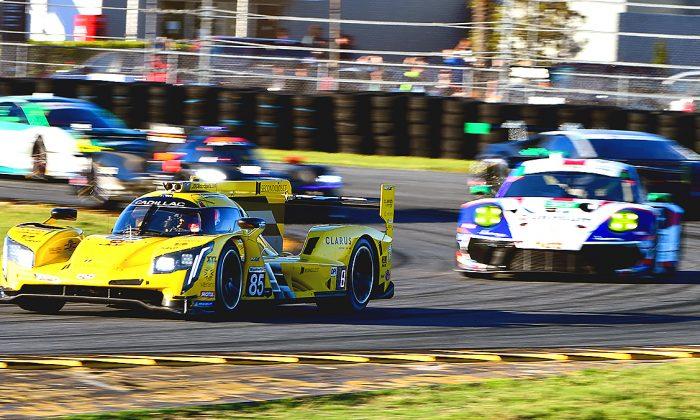Across the continent, sportscar racing fans are rejoicing. Finally, the Tudor SportsCar Championship got it all together and presented a good race—a really good race.
TUSC divided its four-class field in half for the Monterey Grand Prix at Mazda Raceway Laguna Seca, with the Pro-Am PC and GT Daytona cars running early and the Prototype and GT Le Mans classes running in the afternoon. The Pro-Am race was exciting, but it was the Pro race which drew the fans—and their expectations.
After a miserable Balance of Performance at Daytona and Sebring, which basically handed the races to the DP teams, and a slightly better balance at Long Beach, fans wanted to see a fair race at Laguna Seca, a track with no long straight and a lot of fast, flowing corners which should have favored the P2 chassis.
TUSC made a very minor restrictor adjustment for the Daytona Prototypes for Laguna Seca, which cut power by about 15 bhp—just enough that the DPs couldn’t pull away from the P2s exiting every corner and on every short straight. The new balance worked— Extreme Speed Motorsports got its first overall win and the first P2 win of the 2014 TUSC season.
Johannes van Overbeek in the #2 ESM HPD ARX-03b-Honda was quickest in qualifying Saturday; the car started from the pole Sunday afternoon with Ed Brown at the wheel.
Brown fell to third at the start as Michael Valiante’s #90 Spirit of Daytona Coyote-Corvette and Gustavo Yacaman’s #42 Oak Morgan Nissan stormed past to start a battle which involved crazy moves, contact, and penalties by and for both car, with Yacaman trying to pass at least twice per lap, and Valiante very forcefully defending every time.
Yacaman handed off to co-driver Alex Brundle on lap 25 and Valiante swapped for Richard Westbrook on lap 27. Brundle took up where Yacaman had left off, hammering away at the #90 until lap 30, when the Oak driver tried too hard. Brundle attempted to pass Westbrook on the outside entering the Corkscrew, but the SDR driver refused to give an inch.

Gustavo Yacaman in the #42 Oak Racing Morgan-Nissan fought intensely with the race-leading #90 Spirit of Daytona DP, then handed off to co-driver Alex Brundle, who continued the fight. (Halston Pitman/MotorSportMedia)
Brundle plowed through the dirt past Westbrook but speared Christian Fittipaldi’s #5 Action Express Coyote-Corvette as Brundle tried to get back on the pavement. Fittipaldi was pushed into the #07 Mazda Skyactiv diesel, which lost a radiator and had to retire—rather sadly, as the car was quick for the first time all season.
Brundle was awarded a stop-plus 55 seconds for his outstanding off-road driving, and Michael Valiante was assessed a similar penalty for hip-checking Yacaman off the track earlier in the race. It was a costly battle for both teams, but the excitement value was off the charts.
After everyone had pitted, Jordan Taylor in the #190 WTR Dallara-Corvette led. ESM’s lead car, the #1 driven by Scott Sharp and Ryan Dalziel was second and fighting hard for the lead when its gearbox packed in on Lap 44.
Van Overbeek in the second ESM took the lead briefly when Taylor pitted but after the next round of stops was complete on lap 52 with 48 minutes left in the two-hour race, Taylor in the #10 was back in the lead by five seconds over Joao Barbosa’s Action Express #5, with van Overbeek in the ESM #2 a further seven seconds back.
Barbosa had nothing for Taylor; Van Overbeek had plenty for both of them. By Lap 58 the ESM driver had overtaken Barbosa and was hot after Taylor, cutting half a second per lap off Taylor’s lead.
Van Overbeek caught Taylor on lap 74 and pushed constantly until Taylor cracked on lap 76. The WTR driver dropped a wheel at Turn Two, picking up some dirt on his tire, which compromised his grip so he slid wide at Turn Three. Van Overbeek pounced; he took the inside, pulled past, and drove away.
The #2 ESM car had a 3.5 second gap by lap 78; this margin grew to over eight seconds and shrunk to as little as three as the cars negotiated traffic, but at no time did Taylor have a shot at retaking the lead. Van Overbeek took the checkered flag on lap 87 with almost six seconds’ cushion. Third was the #01 Telcel Ganassi of Scott Pruett, 42 seconds behind.

Jan Magnussen and Antonio Garcia in the #3 Corvette Racing C7.R won their second TUSC race in a row, crossing the finish line almost five seconds ahead of the #55 BMW. (Halston Pitman/MotorSportMedia)
Corvette Comes Out on Top Again
Corvette Racing has found the winning formula with its new C7.R chassis; the car earned its second straight of GT Le Mans victory at Laguna Seca.
The #3 Corvette driven by Jan Magnussen and Antonio Garcia was quickest in qualifying, followed by the #56 BMW Team RLL Z4 GTE of John Adwards and Dirk Müller, the #911 Porsche North America RSR of Nick Tandy and Richard Lietz, the #4 Corvette of Olly Gavin and Tom Milner, and the #55 BMW Team RLL Z4 GTE of Andy Priaulx and Bill Auberlen.
The speed of the Vettes and the Porsche was no surprise; the BMWs, with excellent handling suffering from a lack of top end at most tracks, were perfectly suited to Laguna Seca and finally had a chance to compete up front.
Fuel mileage or tire wear might have been a bit of an issue with the BMWs, though it seemed—both stopped twice, while the Corvettes and the Porsche finished the race with one stop each.
The#3 Corvette stayed up front throughout except for pit stops. As is usual in this class, for much of the race the top four or five cars were within a few seconds of each other, but the Corvette was too quick to catch.
John Edwards in the #56 BMW charged into second in the first few minutes of the race, but after half an hour flat-spotted the tires and had to pit. Seventeen minutes from the finish car came together with the #4 Corvette, earning itself a stop-plus sixty second penalty, which dropped it out of the running.
Pierre Kaffer and Giancarlo Fisichella’s #62 Risi Competizione Ferrari 458 also ran near the front through much of the race, event taking the lead late in the race on pit-stop rotation, but ultimately finished third about ten seconds behind Antonio Garcia in the winning #3 Corvette.

Bill Auberlen in #55 BMW Team RLL Z4 GTE got a little physical with Porsche North America driver Nick Tandy in the final two laps but managed to squeeze by to take second, while Tandy was penalized for blocking. (Halston Pitman/MotorSportMedia)
Bill Auberlen really showed what the BMW Z4 could do on a track which suits it. He set fastest lap twice in the final 23 minutes in his pursuit of Nick Tandy in the #911 Porsche, and caught the Porsche in the final few laps.
The BMW driver tried a very bold outside amneuver in Turn 11 on the penultimate lap, only to be run off the track by Tandy. Auberlen recovered, caught the Porsche again, and on the final turn of the final lap was right back on Tandy’s wing.
Auberlen feinted to the outside again, and Tandy drifted right to block him. Auberlen was expecting this, and cut sharply back left to pass the Porsche on the inside, with just a bit of rubbing, to take second at the line.
Both drivers were a bit agitated after the race, as they waited for the stewards to analyze the final two laps. Ultimately Race Control handed Tandy a penalty for blocking on the second-to-last lap, dropping the Porsche from third to ninth in class.
Some think that this was just spirited racing by two very experienced GT drivers, and that no penalties should have been issued. In any case, if either driver was to be pipped, it would have to have been Tandy, so Race Control didn’t make a wrong call.
Best TUSC Race to Date
TUSC seems to be learning with every race since Sebring. TUSC management made a fine adjustment to better balance Daytona Prototypes and P2s, its officiating made sense, it kept the yellow flag furled, it ran fewer commercials (not by much) than in the Long Beach broadcast—TUSC set up a good pair of races and let the races play out to extremely exciting conclusions without the heavy hand of management trying to create made-for-TV sprint finishes.
The series desperately needed the two Monterey Grand Prix races to be successful. After muffing the ending at Daytona, mishandling everything at Sebring, and then burying the Long Beach broadcast in so many commercials fans couldn’t follow the action, TUSC needed a Grand Slam. A bad race might have sent the series irretrievably down the road to ruin, with fewer fans, fewer viewers, fewer sponsors and finally fewer teams until by the end of the season the series had just dried up.
Instead TUSC did its job very well, and got all the breaks it could have—it got its Grand Slam.
Attendance was up at Laguna Seca, bigger than last year’s ALMS race by some reports, and four times as big as last year’s Rolex race. In part that was because Laguna Seca has a lot of history, and is a tremendously exciting place to watch cars race (no track in the world has anything equal to the Corkscrew.) In part it was also because the Monterey Grand Prix was the first race where P2s were deemed to have a fair shot at winning.
Can the series carry that momentum forward to Detroit, to a street track with little sports car history and which will likely favor the DPs? Can TUSC create some history but presenting another exciting race?
With the Prototypes running with the GTDs, closing speeds will be ridiculous, but the P-cars should be able to drop the GTDs on the straights—at least the DPs should. As the two classes spread out, traffic could be constant, which could make for a lot of exciting moments—or a lot of collisions.
TUSC is not done with tis top class. It remains to be seen if the P-class Balance of Performance which worked well enough at Laguna Seca (noted for sweeping curves and with no really long straight) will work at Belle Isle or Indy (likely not.) Whether or not the series can attract more P2 entries depends on whether teams think they'd have a chance to win against the DPs. Whether it can hold old ALMS fans (by far the majority of the fan base) depends on P2s.
TUSC has yet to actually use a yellow flag since Sebring (where five hours were run under caution.) How will the track crews react if there are wrecks at Belle Isle? How quickly can TUSC get the cars pitted and then lined up in proper order, something which seemed to take TUSC an inordinately long time in previous races.
TUSC ran two really good races in Monterey—but they also got very lucky. TUSC did its job right, but it also got every possible break in terms of location, track layout, and most of all on-track action.
Hopefully TUSC will do just as good a job at Belle Isle at the end of May. Hopefully the rest of the world will cooperate, and the race will be trouble-free, with intense competition. Hopefully fans will be impressed even if a DP wins—sufficiently impressed to come back to watch the Sahlen’s Six Hours of the Glen, which won’t be until the end of June.
TUSC is lucky that the Sahlen’s Six Hours is up next, after the Le Mans break—old ALMS fans will watch just to see racing on the historic track, and unless the series really messes up BoP, both DFPs and P2s should do well there. If on the other hand, some disaster strikes at Belle Isle ... Everyone will watch Le Mans, recall how bad Belle Isle looked by comparison, and start watching the WEC and Pirelli Challenge.
TUSC can’t control fate. All the series staff can do is perform as well as they did at Laguna Seca, and hope everything else works out.
Whatever happens next though, the Tudor SportsCar Championship has proved it can run an excellent event, a tough, exciting race which offers sportscar fans just about everything they could ever ask for. Well done, TUSC.
TUSC races next on Detroit’s Belle isle—The Raceway at Belle Isle Park on May 31. This race will include the Prototype class and the GT Daytona class; GTLM and PC will sit this one out. Belle Isle is a bumpy street course that still manages to offer up some medium-speed corners; the newly balanced Daytona Prototypes and P2s should both have a shot at winning, but the DPs have a better shot. In GTD, any one of a number of teams could win.
Visit IMSA.com for more info, or DetroitGP.com for tickets.





